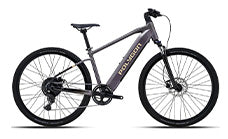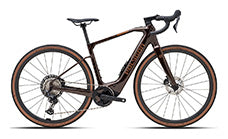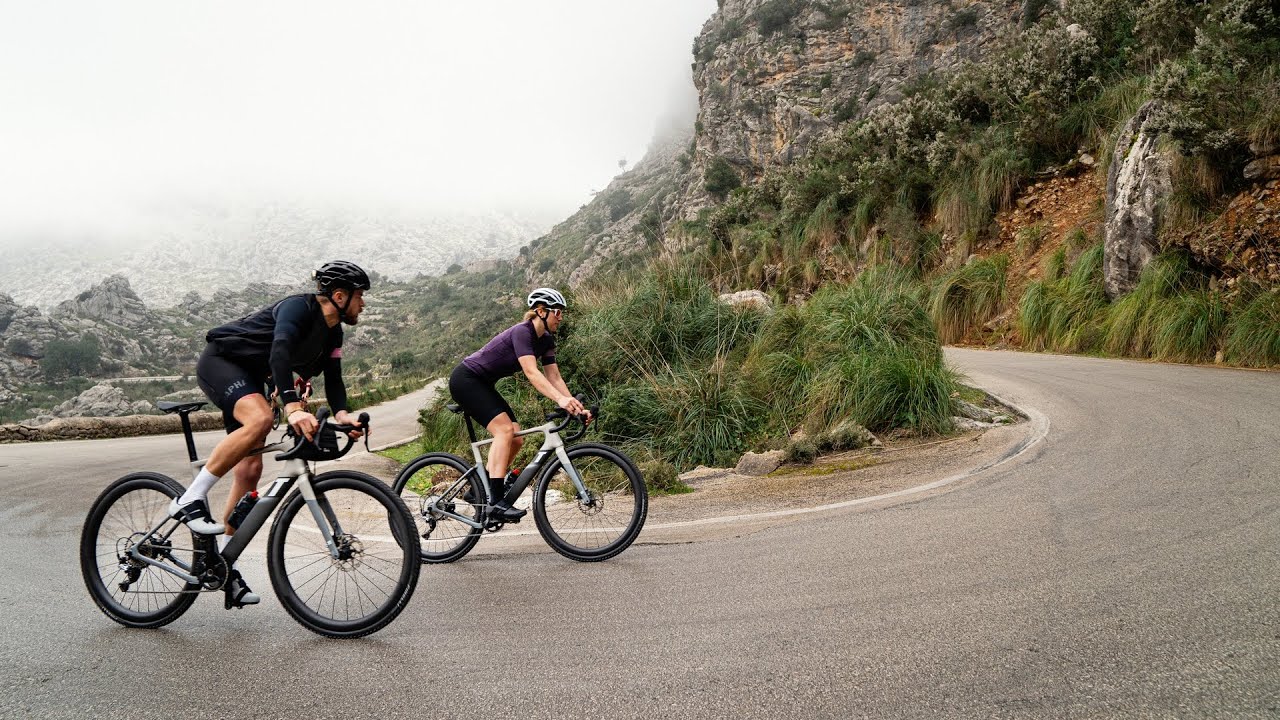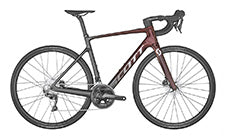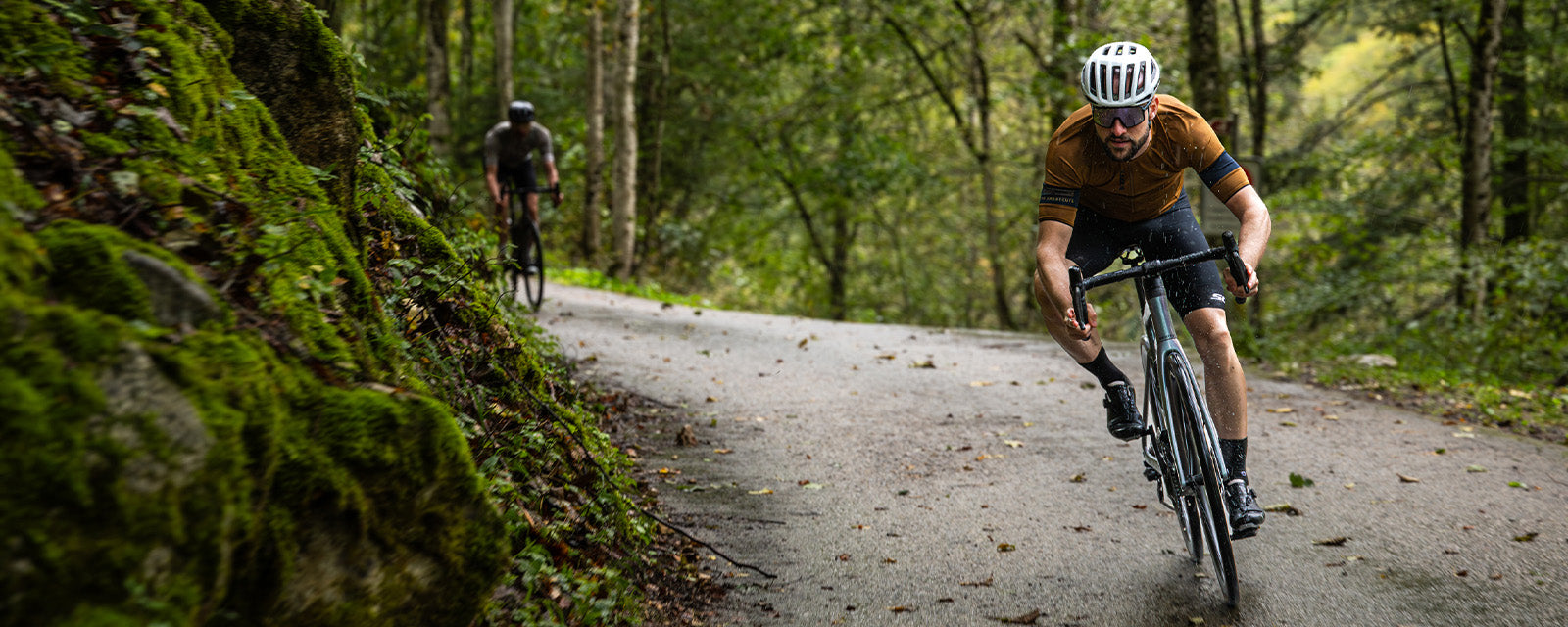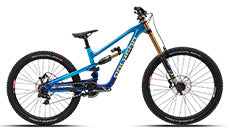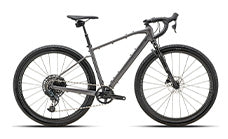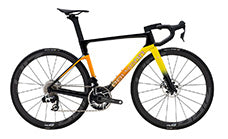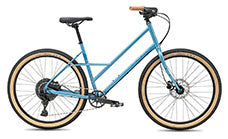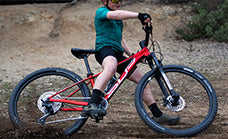What is XC? Cross-Country (XC) Mountain Biking Explained

Cross-country (XC) mountain biking is one of the most popular and accessible ways to hit the trails. Whether you're a beginner looking for your first taste of off-road adventure or a seasoned rider wanting to improve your endurance, XC offers the perfect blend of fitness, fun, and exploration.
In this guide, we’ll break down exactly what XC mountain biking is, who it’s for, the type of bikes and gear you need, and what makes XC trails so unique.
What is XC?
XC, short for cross-country, is a style of mountain biking that focuses on covering varied terrain efficiently. Instead of prioritizing extreme jumps or technical downhill features, XC is about distance, endurance, and smooth trail flow.
You'll find yourself riding rolling singletrack, moderate climbs, and fast descents, all while enjoying the natural scenery. XC rewards stamina, pacing, and bike handling, making it a fantastic all-around discipline to build fitness and skill.
Who is Cross-Country Mountain Biking For?

One of the reasons XC is so popular is its accessibility. You don’t need advanced technical skills to get started, making it a great entry point into mountain biking. If you're comfortable riding off-road and managing uneven surfaces, you're ready to give XC a try.
Beginner-friendly trails are widely available, allowing you to build your confidence before tackling more demanding courses. You don’t have to throw yourself into steep descents or navigate rock gardens on day one – XC allows you to progress at your own pace.
Common Types of Cross-Country Racing
For those who enjoy a bit of competition, XC offers several race formats that suit different levels of experience and fitness:
-
Cross-Country Olympic (XCO): Riders complete multiple laps of a set circuit featuring climbs, descents, and technical features. The first to cross the finish line after the set number of laps wins.
-
Cross-Country Marathon (XCM): A longer, single-loop race that can stretch from 40km to well over 100km, focusing on endurance over extended distances with less emphasis on extreme technical features.
-
Cross-Country Eliminator (XCE): A short, fast-paced event where small groups of riders compete in heats, and the last riders across the line are eliminated until a winner is crowned.
XC races are typically mass-start events, so you’ll ride alongside others, adding an exciting, competitive atmosphere.
What Are Cross-Country Trails Like?
XC trails vary but usually involve a blend of flowing singletrack, wider fire roads, moderate climbs, and mild descents. While you may encounter occasional obstacles like roots, rocks, and small jumps, the focus is on maintaining momentum rather than conquering extreme technical challenges.
Compared to more aggressive mountain biking disciplines, XC trails are designed to keep the ride smooth, fast, and rhythmical, making them perfect for testing your stamina and pacing.
What Bike Do You Need for XC?
Cross-country mountain bikes are designed for speed and efficiency. They're typically lighter than bikes used in more extreme disciplines, helping you climb faster and cover long distances with less effort.
Key features of an XC bike often include:
-
Lightweight frame construction
-
29-inch wheels for better rolling efficiency
-
Narrower tires with low-profile tread for reduced rolling resistance
Cross-country (XC) mountain biking is one of the most popular and accessible ways to hit the trails. Whether you're a beginner looking for your first taste of off-road adventure or a seasoned rider wanting to improve your endurance, XC offers the perfect blend of fitness, fun, and exploration.
In this guide, we’ll break down exactly what XC mountain biking is, who it’s for, the type of bikes and gear you need, and what makes XC trails so unique.
What is XC?
XC, short for cross-country, is a style of mountain biking that focuses on covering varied terrain efficiently. Instead of prioritizing extreme jumps or technical downhill features, XC is about distance, endurance, and smooth trail flow.
You'll find yourself riding rolling singletrack, moderate climbs, and fast descents, all while enjoying the natural scenery. XC rewards stamina, pacing, and bike handling, making it a fantastic all-around discipline to build fitness and skill.
Who is Cross-Country Mountain Biking For?

One of the reasons XC is so popular is its accessibility. You don’t need advanced technical skills to get started, making it a great entry point into mountain biking. If you're comfortable riding off-road and managing uneven surfaces, you're ready to give XC a try.
Beginner-friendly trails are widely available, allowing you to build your confidence before tackling more demanding courses. You don’t have to throw yourself into steep descents or navigate rock gardens on day one – XC allows you to progress at your own pace.
Common Types of Cross-Country Racing
For those who enjoy a bit of competition, XC offers several race formats that suit different levels of experience and fitness:
-
Cross-Country Olympic (XCO): Riders complete multiple laps of a set circuit featuring climbs, descents, and technical features. The first to cross the finish line after the set number of laps wins.
-
Cross-Country Marathon (XCM): A longer, single-loop race that can stretch from 40km to well over 100km, focusing on endurance over extended distances with less emphasis on extreme technical features.
-
Cross-Country Eliminator (XCE): A short, fast-paced event where small groups of riders compete in heats, and the last riders across the line are eliminated until a winner is crowned.
XC races are typically mass-start events, so you’ll ride alongside others, adding an exciting, competitive atmosphere.
What Are Cross-Country Trails Like?
XC trails vary but usually involve a blend of flowing singletrack, wider fire roads, moderate climbs, and mild descents. While you may encounter occasional obstacles like roots, rocks, and small jumps, the focus is on maintaining momentum rather than conquering extreme technical challenges.
Compared to more aggressive mountain biking disciplines, XC trails are designed to keep the ride smooth, fast, and rhythmical, making them perfect for testing your stamina and pacing.
What Bike Do You Need for XC?
Cross-country mountain bikes are designed for speed and efficiency. They're typically lighter than bikes used in more extreme disciplines, helping you climb faster and cover long distances with less effort.
Key features of an XC bike often include:
-
Lightweight frame construction
-
29-inch wheels for better rolling efficiency
-
Narrower tires with low-profile tread for reduced rolling resistance
-
Suspension designed for smoother trails (either a front suspension hardtail or a short-travel full-suspension setup)
If you're just getting started, any well-maintained trail mountain bike will do. Many riders begin on a general-purpose bike before upgrading to something more XC-specific as their interest grows.
Essential Gear for XC Riding
Cross-country mountain biking doesn’t require a huge amount of gear, but a few key items will help you ride safely and comfortably:
-
Helmet: A must for protection on any ride.
-
Comfortable cycling clothes: Many XC riders prefer fitted clothing for reduced wind resistance and better movement.
-
Hydration pack or water bottles: Staying hydrated is essential, especially on longer rides.
-
Repair kit: Carry spare tubes, tire levers, a pump, and basic tools in case of mechanical issues.
-
Gloves: For better grip and hand protection.
-
Mountain bike shoes: Secure your feet on the pedals for efficient power transfer.
-
Knee guards (optional): Extra protection for added confidence on descents.
Why Try Cross-Country Mountain Biking?
XC mountain biking is a rewarding mix of fitness, skill, and adventure. It offers a chance to explore scenic trails, challenge yourself physically, and enjoy the camaraderie of fellow riders – whether you're racing or just out for a weekend ride.
With its balance of accessibility and challenge, cross-country is a discipline that grows with you. From your first beginner-friendly loop to ambitious marathon races, XC offers endless opportunities to ride, progress, and have fun.
FAQs
1. What does XC stand for in mountain biking?
XC stands for "cross-country," a discipline focused on endurance and covering varied terrain efficiently.
2. Do I need a specific bike for XC riding?
While a dedicated XC bike is ideal, many riders start with a general trail bike before upgrading.
3. Are XC trails good for beginners?
Yes! XC trails are often designed to be smooth and manageable, making them a great entry point into mountain biking.
4. What should I wear for XC mountain biking?
Fitted, comfortable cycling clothes, a quality helmet, gloves, and proper shoes are recommended.
5. How can I prepare for an XC race?
Start by riding longer distances, improving your stamina, and practicing on similar terrain. Gradually build your endurance and pacing skills.


